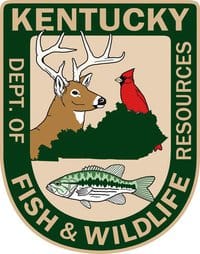Kentucky Fisheries Crews Sampling Walleye Population in Green River Lake Tailwater

The Kentucky Department of Fish and Wildlife Resources collected walleye for hatchery broodstock from the Green River Lake tailwater in late January and late March, causing some concern among anglers who use this resource.
“This is the first year we’ve collected any walleye broodstock from Green River Lake tailwater,” said Gerry Buynak, assistant director of fisheries for Kentucky Fish and Wildlife. “This might be part of the reason for their concerns. However, because of the cold weather this spring, we’ve had trouble getting any walleye from our normal locations at Carr Creek Lake and Laurel River Lake.”
Workers at the Minor Clark Fish Hatchery in Morehead usually need to spawn about 100 walleye females to produce the 1.6 million fingerling walleye stocked in waters around Kentucky.
“We needed more females for the hatchery,” said David Baker, fisheries biologist for the Kentucky Fish and Wildlife. “Anglers get concerned about seeing big walleye leaving the water. The vast majority of these fish were returned April 1.”
The walleye fishery in the Green River Lake tailwater is expanding and Baker does not expect any negative impacts from the broodstock collection.
“We saw fish from 10 inches up through 28 inches in length,” Baker said. “We are seeing good numbers of all sizes of walleye in Green River Lake tailwater.”
Buynak said Green River Lake will receive roughly 400,000 walleye fingerlings in late May or early June. The Green River below the lake gets any excess walleye production.
“The whole reason the fishery exists is stocking,” Baker said. “However, collecting broodfish for spawning is what you have to do to keep the fishery going. There is not enough natural reproduction to sustain the walleye population.”
Fisheries biologists rely on wild stocks of fish from around Kentucky to provide hatchery broodstock.
“Just about every species we stock each year comes from wild stocks: sauger, native and Lake Erie strain walleye, white crappie, muskellunge, redear sunfish, striped bass and white bass,” Buynak said. “We must get them from the wild to preserve the genetic diversity of these species.”
Collecting broodstock, spawning them in the hatchery environment for later stocking and returning the broodstock to the waters from which they came provides all Kentuckians with high quality sport fisheries.
“We want people to come out and catch fish,” Baker said. “Hopefully, they catch some trophy fish.”

